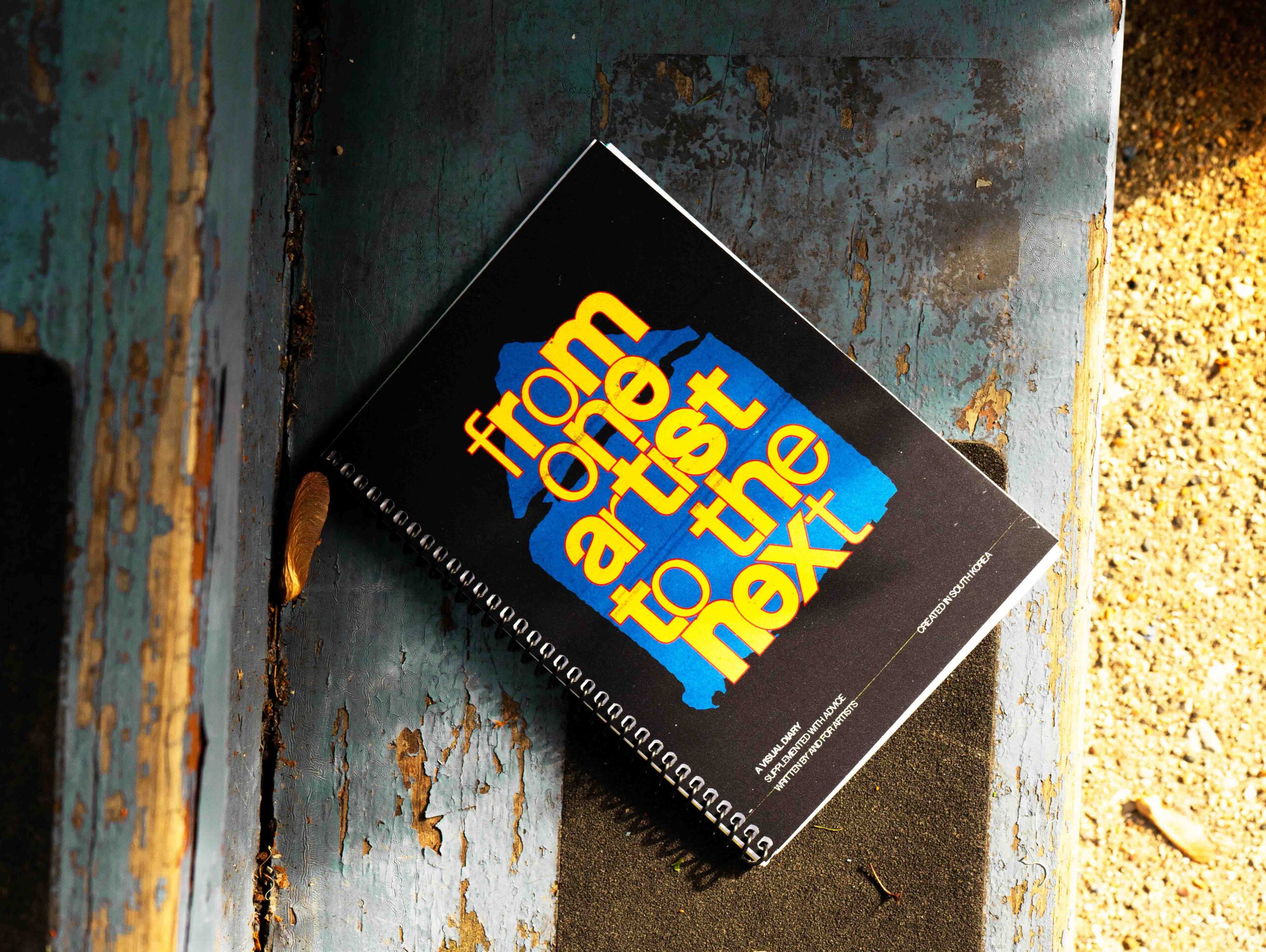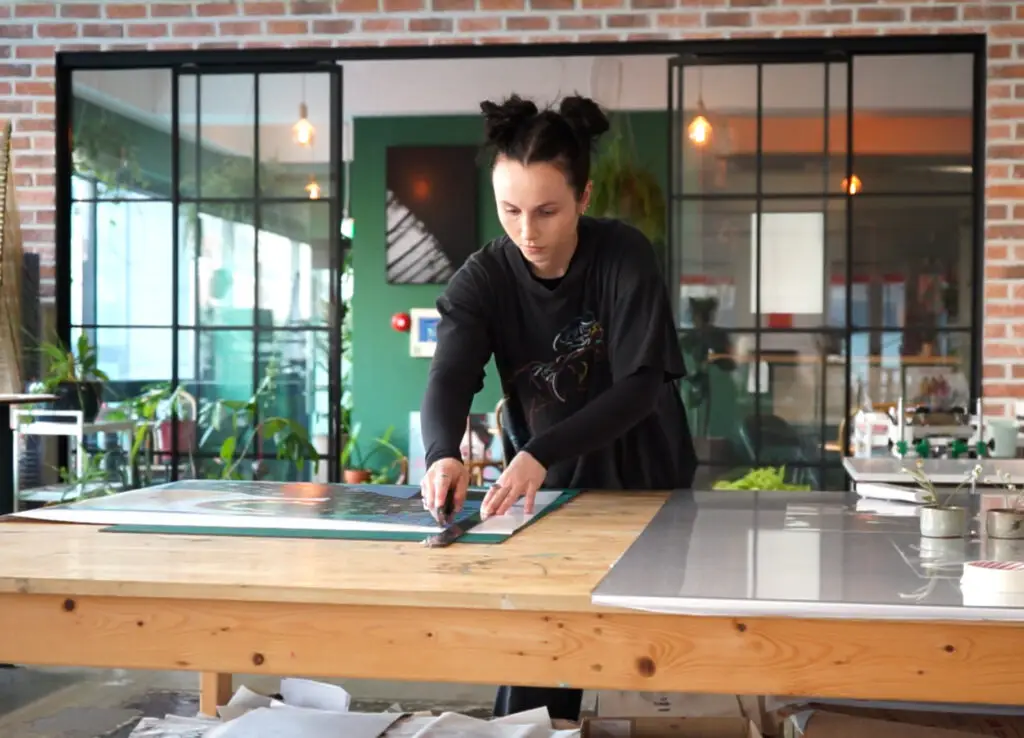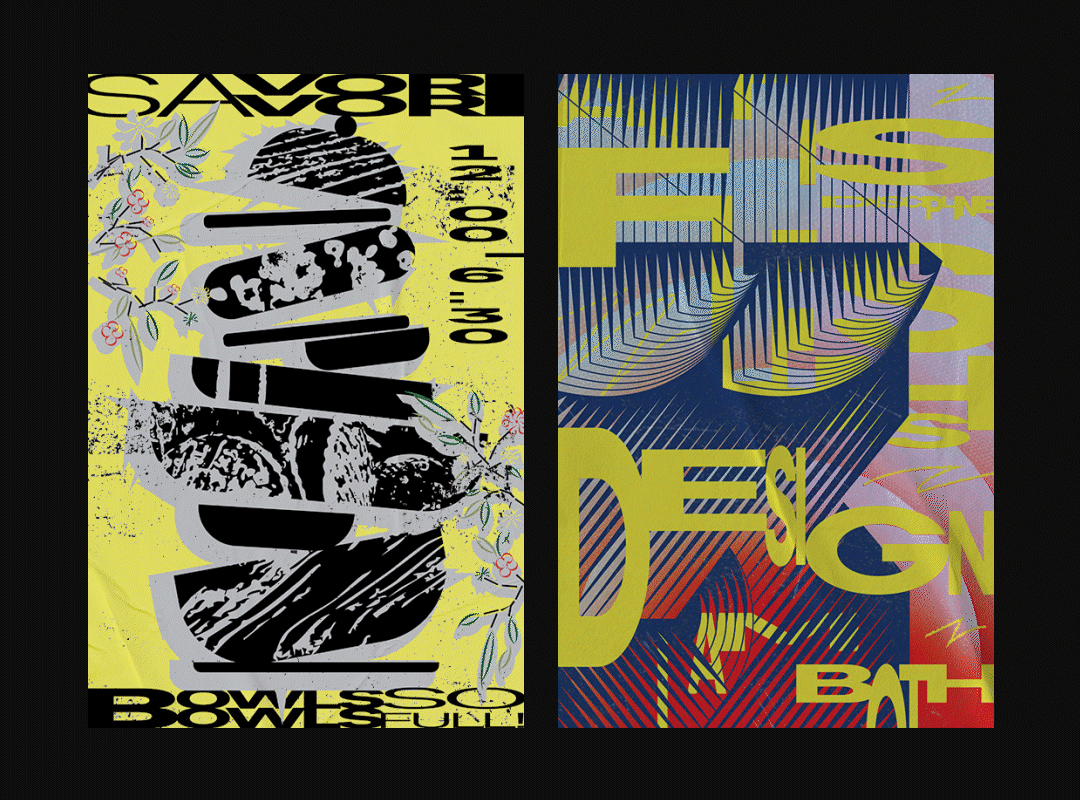Chicago-based graphic designer, Cass Pokora recently returned from an art residency in South Korea, through a program at Naughty Muse. In this article, she speaks about her experience and how her learnings have carried over into her creative practice at home.
Busan is the second-largest city in South Korea
It has a coastal environment with sparkling views of the Sea of Japan, alongside towering skyscrapers. It’s full of energy, inspiration, and unique smells. In the month of March, I participated in an artist residency program at Naughty Muse Studios in Busan. I spent my time exploring, observing, talking, eating, wandering, and creating.

The days were filled with field trips to neighboring cities, temple visits, museum tours, and studio happenings. The studio held artist talks, live interpretive dance performances, and art history lectures. It was all art, all the time. Some of the most notable experiences included visiting the Gimhae Buncheong Ceramics Museum, viewing the Nam June Paik, Nam June Paik, and Nam June Paik exhibition at the Busan Museum of Contemporary Art, and taking part in an intimate social exercise led by Sin Cha Hong, a pioneering Korean dancer, choreographer, vocalist, and writer, in which I connected with a complete stranger by staring into their eyes for what felt like an eternity, but in reality was probably about eight minutes. Although my partner and I could not communicate verbally very well, we connected emotionally, as the exercise moved both of us to tears and laughter.
Outside of the studio, I gained a deeper understanding of Korean culture, history, politics, and the country’s evolving creative identity. I shared traditional meals where the conversations were just as rich and layered as the food itself. The atmosphere was one of openness, where ideas and perspectives flowed without fear of judgment.


Breaking routine
Stepping away from the structure of a 9-to-5 schedule as a graphic designer confirmed what I already know: sitting at a desk in an office isn’t necessarily the path to one’s most creative self. I applied to this residency program craving a shake-up, knowing I have much more to learn. What I didn’t expect was how deeply the experience would impact me.
Of course, there were challenges. Living in a completely different culture meant confronting discomforts and moments of vulnerability. I tried my best to welcome those moments. Growth rarely happens when you’re comfortable anyway.
The residency was very open-ended, and I had the ability to create away from any client brief. I experimented freely, both in content and medium. I explored new printmaking techniques, worked behind my cameras, and created digitally. I produced work fast and without hesitation. That freedom and the absence of structure allowed me to work without the weight of expectation.
I began to create from instinct rather than instruction, and in doing so, I rediscovered the thrill of making something simply because it feels right.
Cass Pokora

People and community
One of the most powerful parts of this residency was the sense of community. Although English was our shared language, it was a second or third language for most. Still, everyone made an incredible effort to communicate with one another. Even when we misunderstood each other, laughter bridged the gaps. It reminded me that art and design are languages too, ones that can surpass words entirely.
One comment from another designer stuck with me. While they scrolled through my portfolio, they casually mentioned that my work felt “very American.” I thought that was an interesting comment and something I had never really thought about. It made me question assumptions and aesthetics I hadn’t realized were cultural. Working alongside people from different backgrounds challenged me in the best way. It pushed me to question not only my aesthetic choices, but my design priorities. What does it mean to design for someone whose reference points are different from your own? What does universal communication look like in design? I’ll continue to think about these things.

Before I left, I invited the other artists I met to write down advice for other artists in my sketchbook. I compiled their reflections into a sort of visual diary, complete with images, logos, shapes, and colors that inspired me while traveling. The artists were very generous with their words. My favorite piece of advice comes from my fellow artist-in-residence, Stephanie Kilgast, an accomplished French sculptor. She writes on the topics of doubt and confidence: “Doubt your own work just enough to always be able to improve it. Be confident enough so you’re convinced that you should keep doing it regardless.”
Back in Chicago
The residency gave me space to follow creative impulses without needing to justify them. I came home with more questions than answers, as well as a renewed trust in intuition. Without the usual pressures of performance or perfection, I tapped into a more honest way of working that prioritized discovery over resolution.
In Chicago, we’re fortunate to be part of an established and dynamic design community, similar to the one I got to be a part of in Busan. It’s a community that already values collaboration, critique, and care. But even here, it’s worth protecting the space to experiment. To make things that don’t need to serve a client. To try things that might not work. The process itself holds value.
Growth in this field is continuous, self-driven exploration. It often begins with widening one’s frame of reference. By staying in conversation with the wider creative world, sharing generously, and continuing to create environments that welcome differences, we strengthen what already makes Chicago design so impactful. Our best work comes not from being precious but from being present.
By Cass Pokora
A Chicago-based graphic designer and artist working at the intersection of concept, strategy, and experimentation. She builds brand identities and experiences that live harmoniously across digital and physical dimensions. As both a designer and an artist, she strives to create work that connects to people emotionally by intertwining function with feeling.